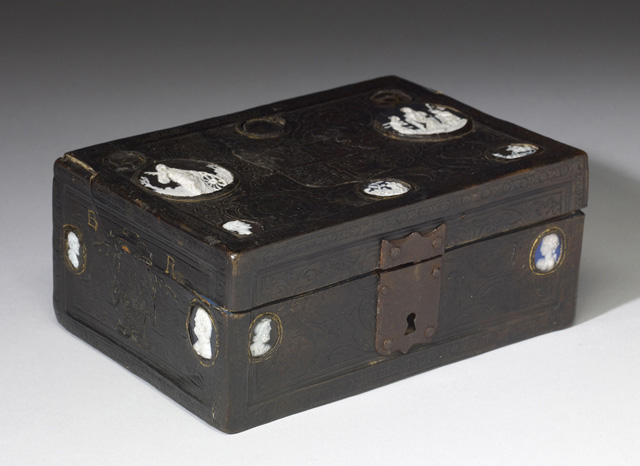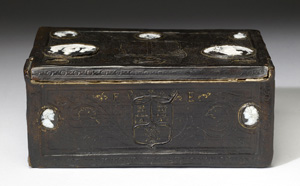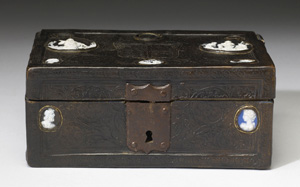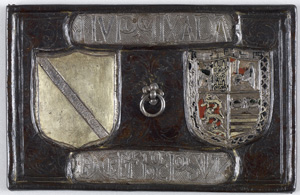Box for a French Pennant Taken at the Battle of Pavia
The Walters Art Museum, Baltimore

 Select the image to zoom
Select the image to zoom
This leather box is unremarkable for its artistry—the foliage pattern engraved in the leather and the glass cameos imitating ancient and modern banded onyx with busts, the Adoration of the Shepherds, and saints are ordinary—but noteworthy for its former contents. The inscription declares that this box held a French pennant taken on 25 February 1525 (actually 24 February), at the Battle of Pavia in Italy, when the French army under Francis I was defeated by that of Emperor Charles V. Juan Lopez Quixada did not capture the king (as earlier references to the box claimed) but may be the "Casada" noted by the Italian historian Paolo Giovio as a man of "singular ardor" and captain of the Spanish harquebusiers, who were devastating to the heavily armored French nobility and critical to the assault on Francis himself. A painting of the battle in the Ashmolean Museum, Oxford shows two pennants, one blue with fleur de lis, carried by armored riders around the king as he is surrounded by imperial forces. Is this the "the royal flag (drapeau royale [sic]), taken from Francis I at the battle of Pavia," described as "blue, with the arms of France," noted in the Brussels royal armory in 1682, but by 1897, not to be found? Unspecified trophies from Pavia were deposited into Charles's armory at Valladolid but are no longer traceable.
The silk pennant, a secular relic, was accompanied by sacred relics, surely booty from the French camp. Princes often took relics on military campaigns, hoping that their presence would influence events (see the inventory of relics taken from Charles the Bold's camp by the Swiss at Grandson in 1476). The coats of arms on the exterior and interior remain unidentified.







